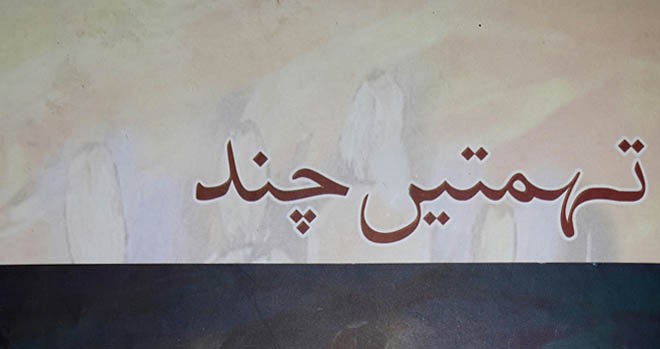
Jiwan Khan’s reprinted collection of prose offers a delightful insight into the social and historical milieu of middle-class thought

Two events in the 1950s and 1960s shaped the future of Urdu literature in Pakistan. Firstly, the critic Muhammad Hasan Askari, in an attack on the sensibility created by the progressive writers and their mantra of social responsibility, wrote that Urdu literature was stagnant. Askari and Mumtaz Shirin critiqued Urdu creative writing for its incarceration behind the bars of progressive agenda. Secondly, Qudratullah Shahab, a bureaucrat with literary aspirations established the Pakistan Writers’ Guild under the patronage of the Ayub Khan government.
Askari’s critical appraisal of the creative idiom in Urdu was a radical revisionist analysis of Urdu literature in the immediate backdrop of the highly successful Progressive Writers Movement which had gained impetus in the short story before and after 1947.
Shahab was radical in his own way. Since the progressive writers had reimagined the limits of realist fiction, the bureaucrat-turned-Sufi broke away from the main current of revolutionary literature to establish a pro-state ideology in the name of a national literature. While Nasim Hijazi is widely credited and acknowledged for creating the character of a Muslim hero who had a regressive persona, his own mediocre talent as a writer was dependent more on rhetorical descriptions. Shahab’s immediate galaxy of stars included men and women such as Mumtaz Mufti, Bano Qudsia and Ashfaq Ahmed, all of whom were fairly decent writers. Pakistan Writers’ Guild consciously appropriated the jargon and idiom of the Progressive Movement in order to obfuscate its true face as regressive, state-sponsored literature with a definite orientation. One of the natural consequences of such a vehement anti-progressive stance from critics as well as state organs was that Urdu prose became bland and monotonous. Critic Safdar Mir also noted a tendency to move away from prose writing.
It is a refreshing revelation then, while reading a book originally written in 1972, that a career bureaucrat not only resisted the temptation to write under the umbrella of the Guild, but also that in so doing, he "wrote back" against Askari’s charge, and made his own small contribution to creating ripples in the stagnant waters of Urdu prose.
Jiwan Khan’s Tuhmatain Chand, reprinted recently, offers a delightful insight into the social and historical milieu of middle-class thought in the young Pakistani nation. Far more significantly, he contributed, willingly or unwillingly, to writing prose that is not confined within the parameters of non-fiction and fiction. Many of the prose pieces in this collection contain stylistic elements of both the essay and the short story. ‘Banwaray Manazir’, for example, is a montage of visual images from rural Punjab, which have the topicality of an essay, and the universality of a short story. These images highlight the oppression that is inherent in the feudal system that still prevails in these regions. The following translation offers a limited glimpse of the author’s ability to construct layered images which have a definite structural and thematic unity: "How beautiful is the horse! Compared to the bullocks, he is healthy and mighty. The rider reaches the hut. The boy who was earlier eating pieces of stale bread with lassi now steps out and lays down a colourful cot. The rider has set his horse free in the ready crop, while he sits on the cot and sips milk brought by the man in dirty clothes. The horse eats the ripe kernels of the crop, and neighs. The bullocks, feeding on dried hay, turn towards the horse, and then return to eating their fodder. The rider is the patwari of this region, and the man now scratching his beard is a farmer." This depiction of the many strata of Pakistani society, highlighting oppression, but doing so with a prose that refuses to appropriate the progressive idiom in imitation of the Writers’ Guild, renders Khan’s prose as something that can only be described as compassionate.
While the latter part of the book mainly contains prose that analyses the many contradictions of our society, there are various prose sketches that are not boisterously hilarious, but capture the essence of prose writing in the vein of Oscar Wilde. ‘In praise of myself’, ‘How long shall she dance?’, ‘I am a teacher’, ‘Donkeys’, and ‘We would have been revolutionaries’ are some of the most delightful examples of how language can be used to write prose that is not bound by dictates of agenda, whether progressive or anti-progressive.
Khan’s prose is tongue-in-cheek, and pared down in a Pinteresque way. He uses language not for embellishment, but because he understands that the true moving force behind great prose is language that immediately strikes in its self-sufficiency. This quality of the language of prose is essential for breathing a new life into it.
The new edition of this important collection of prose reignites the debate about the stagnancy of the Urdu creative idiom. One hopes that Khan’s example highlights the need for Urdu prose to divest itself of its brilliant garments of agenda, and be elevated to a more humble and humane purpose: linguistic expression that is tied to life, is life, and transcends life.